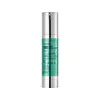What's inside
What's inside
 Key Ingredients
Key Ingredients

 Benefits
Benefits

 Concerns
Concerns

 Ingredients Side-by-side
Ingredients Side-by-side

Water
Skin ConditioningButylene Glycol
HumectantC12-15 Alkyl Benzoate
AntimicrobialGlycerin
HumectantCetearyl Alcohol
EmollientCeteth-20
CleansingGlyceryl Stearate
EmollientSodium Polyacrylate
AbsorbentResveratrol
AntioxidantPinus Pinaster Bark Extract
AntioxidantFerulic Acid
AntimicrobialLaureth-7
EmulsifyingTocopheryl Acetate
AntioxidantUbiquinone
AntioxidantCrambe Abyssinica Seed Oil
Skin ConditioningCamellia Sinensis Leaf Extract
AntimicrobialMorus Alba Fruit Extract
AntioxidantPyrus Malus Fruit Extract
Skin ConditioningFragaria Ananassa Fruit Extract
Skin ConditioningNiacinamide
SmoothingVitis Vinifera Seed Extract
AntimicrobialSorbitan Oleate
EmulsifyingDehydroacetic Acid
PreservativeBenzoic Acid
MaskingSorbic Acid
PreservativeBenzyl Alcohol
PerfumingPhenoxyethanol
PreservativeWater, Butylene Glycol, C12-15 Alkyl Benzoate, Glycerin, Cetearyl Alcohol, Ceteth-20, Glyceryl Stearate, Sodium Polyacrylate, Resveratrol, Pinus Pinaster Bark Extract, Ferulic Acid, Laureth-7, Tocopheryl Acetate, Ubiquinone, Crambe Abyssinica Seed Oil, Camellia Sinensis Leaf Extract, Morus Alba Fruit Extract, Pyrus Malus Fruit Extract, Fragaria Ananassa Fruit Extract, Niacinamide, Vitis Vinifera Seed Extract, Sorbitan Oleate, Dehydroacetic Acid, Benzoic Acid, Sorbic Acid, Benzyl Alcohol, Phenoxyethanol
Water
Skin ConditioningDicaprylyl Carbonate
EmollientCaprylic/Capric Triglyceride
MaskingPolyglyceryl-4 Diisostearate/Polyhydroxystearate/Sebacate
EmulsifyingSorbitol
HumectantPolyglyceryl-4 Isostearate
EmulsifyingNiacinamide
SmoothingButylene Glycol Dicaprylate/Dicaprate
EmollientMagnesium Sulfate
Hyaluronic Acid
HumectantDipropylene Glycol
HumectantPolyurethane-15
1,2-Hexanediol
Skin ConditioningHydroxyacetophenone
AntioxidantDiisostearyl Malate
EmollientSorbitan Olivate
EmulsifyingSynthetic Beeswax
Emulsion StabilisingSilica
AbrasiveEthylhexylglycerin
Skin ConditioningHippophae Rhamnoides Fruit Oil
Skin ProtectingButylene Glycol
HumectantAdenosine
Skin ConditioningButyrospermum Parkii Butter
Skin ConditioningDisodium EDTA
Centella Asiatica Extract
CleansingGlutathione
Glycerin
HumectantSqualane
EmollientTocopherol
AntioxidantPolyglyceryl-10 Laurate
Skin ConditioningCentella Asiatica Callus Extracellular Vesicles
Sodium Hyaluronate
HumectantPanax Ginseng Root Extract
EmollientTripeptide-1
Skin ConditioningSucrose
HumectantHexapeptide-9
Skin ConditioningCopper Tripeptide-1
Skin ConditioningAcetyl Hexapeptide-8
HumectantHydroxypropyltrimonium Hyaluronate
Palmitoyl Pentapeptide-4
Skin ConditioningSodium Dna
Skin ConditioningSodium Acetylated Hyaluronate
HumectantMineral Salts
Skin ConditioningHydrolyzed Hyaluronic Acid
HumectantHydrolyzed Sodium Hyaluronate
Skin ConditioningSodium Hyaluronate Crosspolymer
HumectantMadecassoside
AntioxidantMadecassic Acid
Skin ConditioningPropolis Extract
Skin ConditioningAsiaticoside
AntioxidantAsiatic Acid
Skin ConditioningPotassium Hyaluronate
Skin ConditioningWater, Dicaprylyl Carbonate, Caprylic/Capric Triglyceride, Polyglyceryl-4 Diisostearate/Polyhydroxystearate/Sebacate, Sorbitol, Polyglyceryl-4 Isostearate, Niacinamide, Butylene Glycol Dicaprylate/Dicaprate, Magnesium Sulfate, Hyaluronic Acid, Dipropylene Glycol, Polyurethane-15, 1,2-Hexanediol, Hydroxyacetophenone, Diisostearyl Malate, Sorbitan Olivate, Synthetic Beeswax, Silica, Ethylhexylglycerin, Hippophae Rhamnoides Fruit Oil, Butylene Glycol, Adenosine, Butyrospermum Parkii Butter, Disodium EDTA, Centella Asiatica Extract, Glutathione, Glycerin, Squalane, Tocopherol, Polyglyceryl-10 Laurate, Centella Asiatica Callus Extracellular Vesicles, Sodium Hyaluronate, Panax Ginseng Root Extract, Tripeptide-1, Sucrose, Hexapeptide-9, Copper Tripeptide-1, Acetyl Hexapeptide-8, Hydroxypropyltrimonium Hyaluronate, Palmitoyl Pentapeptide-4, Sodium Dna, Sodium Acetylated Hyaluronate, Mineral Salts, Hydrolyzed Hyaluronic Acid, Hydrolyzed Sodium Hyaluronate, Sodium Hyaluronate Crosspolymer, Madecassoside, Madecassic Acid, Propolis Extract, Asiaticoside, Asiatic Acid, Potassium Hyaluronate
Ingredients Explained
These ingredients are found in both products.
Ingredients higher up in an ingredient list are typically present in a larger amount.
Butylene Glycol (or BG) is used within cosmetic products for a few different reasons:
Overall, Butylene Glycol is a safe and well-rounded ingredient that works well with other ingredients.
Though this ingredient works well with most skin types, some people with sensitive skin may experience a reaction such as allergic rashes, closed comedones, or itchiness.
Learn more about Butylene GlycolGlycerin is already naturally found in your skin. It helps moisturize and protect your skin.
A study from 2016 found glycerin to be more effective as a humectant than AHAs and hyaluronic acid.
As a humectant, it helps the skin stay hydrated by pulling moisture to your skin. The low molecular weight of glycerin allows it to pull moisture into the deeper layers of your skin.
Hydrated skin improves your skin barrier; Your skin barrier helps protect against irritants and bacteria.
Glycerin has also been found to have antimicrobial and antiviral properties. Due to these properties, glycerin is often used in wound and burn treatments.
In cosmetics, glycerin is usually derived from plants such as soybean or palm. However, it can also be sourced from animals, such as tallow or animal fat.
This ingredient is organic, colorless, odorless, and non-toxic.
Glycerin is the name for this ingredient in American English. British English uses Glycerol/Glycerine.
Learn more about GlycerinNiacinamide is a multitasking form of vitamin B3 that strengthens the skin barrier, reduces pores and dark spots, regulates oil, and improves signs of aging.
And the best part? It's gentle and well-tolerated by most skin types, including sensitive and reactive skin.
You might have heard of "niacin flush", or the reddening of skin that causes itchiness. Niacinamide has not been found to cause this.
In very rare cases, some individuals may not be able to tolerate niacinamide at all or experience an allergic reaction to it.
If you are experiencing flaking, irritation, and dryness with this ingredient, be sure to double check all your products as this ingredient can be found in all categories of skincare.
When incorporating niacinamide into your routine, look out for concentration amounts. Typically, 5% niacinamide provides benefits such as fading dark spots. However, if you have sensitive skin, it is better to begin with a smaller concentration.
When you apply niacinamide to your skin, your body converts it into nicotinamide adenine dinucleotide (NAD). NAD is an essential coenzyme that is already found in your cells as "fuel" and powers countless biological processes.
In your skin, NAD helps repair cell damage, produce new healthy cells, support collagen production, strengthen the skin barrier, and fight environmental stressors (like UV and pollution).
Our natural NAD levels start to decline with age, leading to slower skin repair, visible aging, and a weaker skin barrier. By providing your skin niacinamide, you're recharging your skin's NAD levels. This leads to stronger, healthier, and younger looking skin.
Another name for vitamin B3 is nicotinamide. This vitamin is water-soluble and our bodies don't store it. We obtain Vitamin B3 from either food or skincare. Meat, fish, wheat, yeast, and leafy greens contain vitamin B3.
The type of niacinamide used in skincare is synthetically created.
Learn more about NiacinamideWater. It's the most common cosmetic ingredient of all. You'll usually see it at the top of ingredient lists, meaning that it makes up the largest part of the product.
So why is it so popular? Water most often acts as a solvent - this means that it helps dissolve other ingredients into the formulation.
You'll also recognize water as that liquid we all need to stay alive. If you see this, drink a glass of water. Stay hydrated!
Learn more about Water